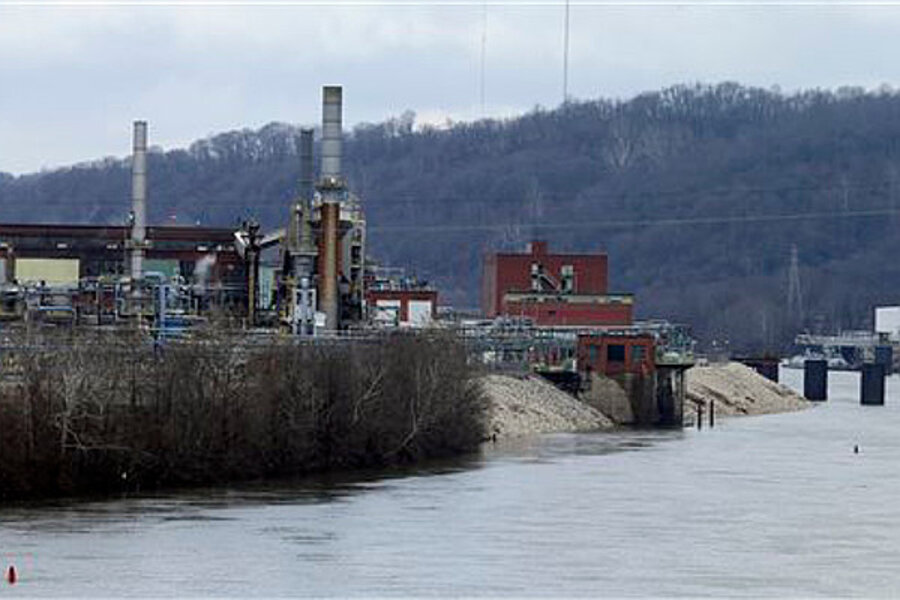West Virginia spill site was subject of 2010 complaint
| CHARLESTON, W.Va.
West Virginia inspectors visited the site of last week's chemical spill in 2010, when a nearby resident complained about a strong odor of licorice, the same smell that led officials to the spill Jan. 9, according to documents released Thursday.
The company that stores the chemical that leaked into the Elk River and contaminated drinking water for 300,000 people was not cited after the 2010 visit, the documents showed. Robert Keatley, one of the inspectors, said in an email that the odor was not strong enough to merit a citation.
Because the site only stored and did not manufacture chemicals, state officials have said it did not need permits to discharge pollutants into the air or water. Previously, the state environmental department said the last inspection report for the site dated to 2001, when it was a refinery owned by a different company and operating under more stringent rules.
During the 2010 visit, the inspectors noted the company, Freedom Industries, should file paperwork to see if it needed a permit for the chemical that caused the odor. Freedom submitted it, and it was determined that a permit wasn't necessary, Keatley said.
The licorice smell was prominent around the site on the morning of Jan. 9, the day the spill was discovered, and the odor has lingered in the air and the water even as water for most Charleston-area residents has been declared safe to drink. State officials have said they think the leak started Jan. 9.
Little is known about the effects of human exposure to the chemical, which is known as MCHM and is used to clean coal. Some people got sick after the spill but none of the illnesses was serious.
The documents, first obtained by The Wall Street Journal, also showed several other routine visits to the site by state inspectors between 2002 and 2012. No violations were found during those visits.
The documents also showed that a nearby businessman reported a strong odor on the morning of Jan. 9, telling state environmental officials that his wife was coughing and it was coating her throat.
Al Gold, owner of a restaurant supply company on the Elk River about a mile downstream from the Freedom Industries site, told The Associated Press that he has smelled the licorice odor for at least the past two years, but he never complained about it until the day of the spill, when the smell became overwhelming as he and his wife drove past the site on their way to work.
"My wife almost immediately started getting headaches, started getting nauseous, and we knew something was wrong," Gold said.
He said he called 911 after he did not hear back from the state Department of Environmental Protection. A department official eventually got back to him about seven hours after his call and said the department was checking the air, he said.
After the spill, Freedom Industries moved the remaining chemical to another storage facility about 10 miles away, in Nitro, but state regulators found several safety violations there, including holes in a backup containment wall.
Freedom has now agreed to store the chemical in double-walled tanks at the Nitro site. Department of Environmental Protection spokesman Tom Aluise said he expected all material to be transferred by Jan. 23. Almost 1 million gallons of other chemicals at the spill site still need to be moved elsewhere.
State regulators haven't determined penalties for Freedom Industries for the spill, violations at the second site or for missing a Thursday deadline to tell the state how it would fix its problems at the second site.
A Freedom Industries spokeswoman declined to comment Thursday.
Associated Press Writer Jonathan Mattise contributed to this report.
Copyright 2014 The Associated Press. All rights reserved. This material may not be published, broadcast, rewritten or redistributed.








